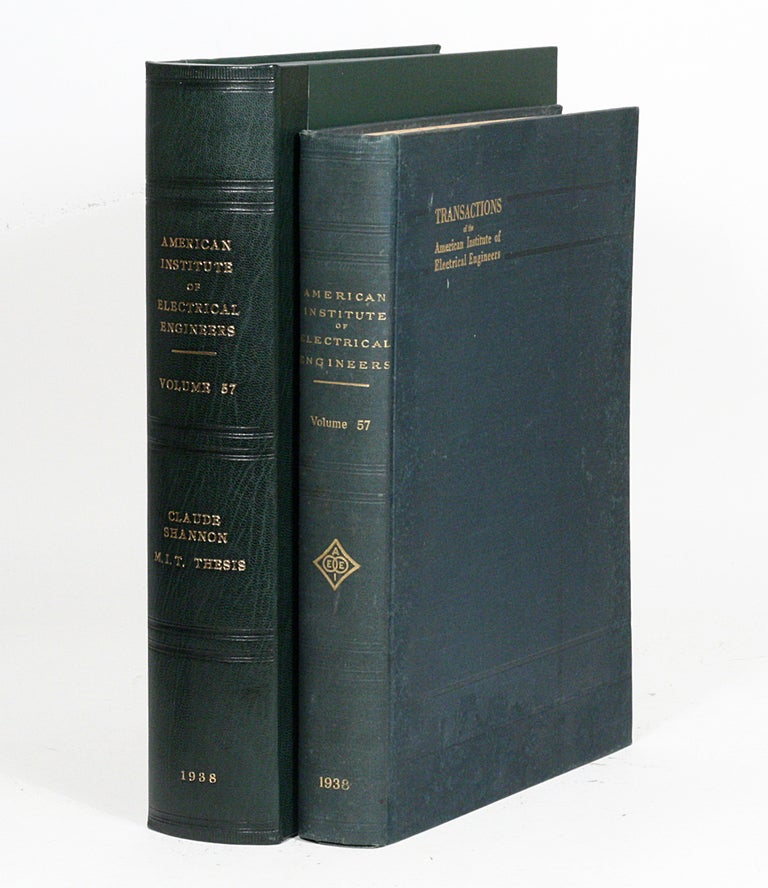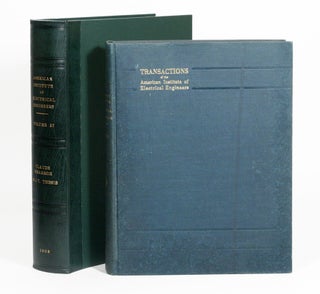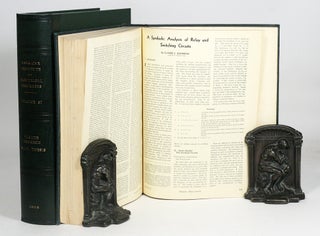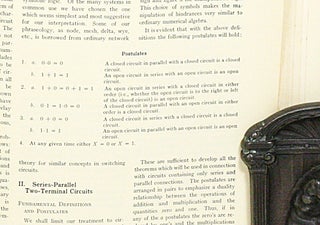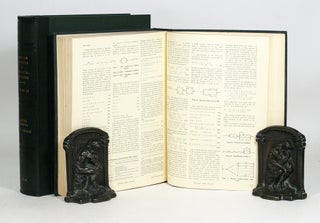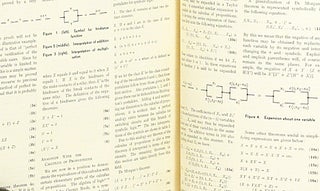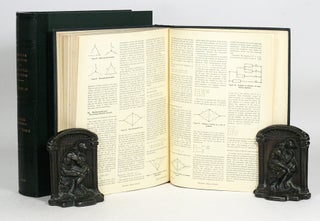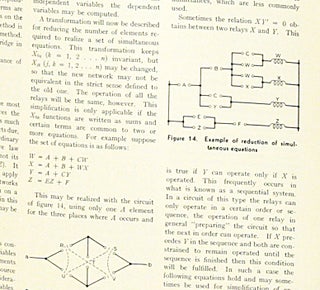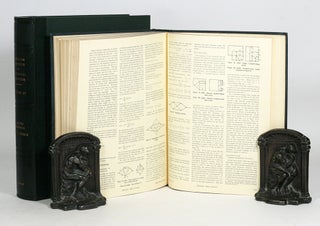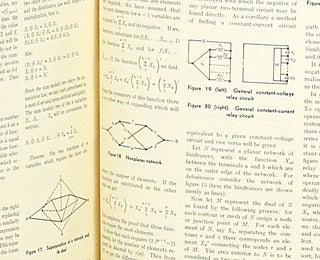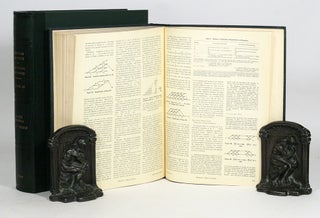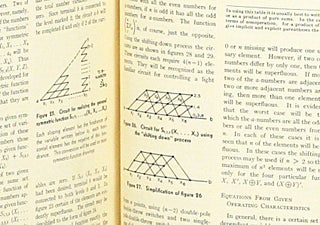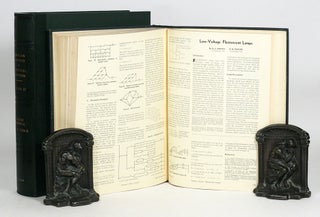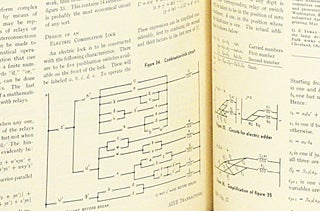A symbolic analysis of relay and switching circuits
”The method of attack on these problems may be described briefly as follows: any circuit is represented by a set of equations, the terms of the equations corresponding to the various relays and switches in the circuit. A calculus is developed for manipulating these equations by simple mathematical processes, most of which are similar to ordinary algebraic algorisms. This calculus is shown to be exactly analogous to the calculus of propositions used in the symbolic study of logic...”
RARE FIRST EDITION OF SHANNON’S MASTER’S THESIS, ONE OF THE MOST IMPORTANT PAPERS IN THIS HISTORY OF THE DIGITAL COMPUTER AND “THE MAGNA CARTA OF THE INFORMATION AGE”.
“There was another seminal theoretical breakthrough in 1937, similar to Turing’s in that it was purely a thought experiment. This one was the work of an MIT graduate student named Claude Shannon, who that year turned in the most influential master’s thesis of all time, a paper that Scientific American later dubbed ‘the Magna Carta of the Information Age.’
“Shannon grew up in a small Michigan town where he built model planes and amateur radios, then went on to major in electrical engineering and math at the University of Michigan. In his senior year he answered a help-wanted listing tacked to a bulletin board, which offered a job at MIT working under Vannevar Bush helping to run the Differential Analyzer. Shannon got the job and was mesmerized by the machine—not so much the rods and pulleys and wheels that formed the analog components as the electromagnetic relay switches that were part of its control circuit. As electrical signals caused them to click open and clack closed, the switches created different circuit patterns.
“During the summer of 1937, Shannon took a break from MIT and went to work at Bell Labs...
At Bell Labs, Shannon saw up close the wonderful power of the phone system’s circuits, which used electrical switches to route calls and balance loads. In his mind, he began connecting the workings of these circuits to another subject he found fascinating, the system of logic formulated ninety years earlier by the British mathematician George Boole. Boole revolutionized logic by finding ways to express logical statements using symbols and equations. He gave true propositions the value 1 and false propositions a 0. A set of basic logical operations—such as and , or , not , either/or , and if/then could then be performed using these propositions, just as if they were math equations.
“Shannon figured out that electrical circuits could execute these logical operations using an arrangement of on-off switches. To perform an and function, for example, two switches could be put in sequence, so that both had to be on for electricity to flow. To perform an or function, the switches could be in parallel so that electricity would flow if either of them was on. Slightly more versatile switches called logic gates could streamline the process. In other words, you could design a circuit containing a lot of relays and logic gates that could perform, step by step, a sequence of logical tasks...
“When Shannon returned to MIT in the fall, Bush was fascinated by his ideas and urged him to include them in his master’s thesis. Entitled ‘A Symbolic Analysis of Relay and Switching Circuits,’ it showed how each of the many functions of Boolean algebra could be executed. ‘It is possible to perform complex mathematical operations by means of relay circuits,’ he summed up at the end. This became the basic concept underlying all digital computers.
“Shannon’s ideas intrigued Turing because they neatly related to his own just-published concept of a universal machine that could use simple instructions, expressed in binary coding, to tackle problems not only of math but of logic. Also, since logic was related to the way human minds reason, a machine that performed logical tasks could, in theory, mimic the way humans think” (Walter Isaacson, The Innovators).
In: Transactions of the American Institute of Electrical Engineers 57 (1938): 713-23. New York: American Institute of Electrical Engineers, 1938. Quarto, original dark blue publisher’s cloth; custom half-leather box. Cloth with some surface damage around edges (possibly moisture), boards slightly bowed. Text clean. The first edition of Shannon’s thesis is notoriously rare, particularly (like this copy) without any institutional stamps.
Check Availability:
P: 212.326.8907
E: info@manhattanrarebooks.com


